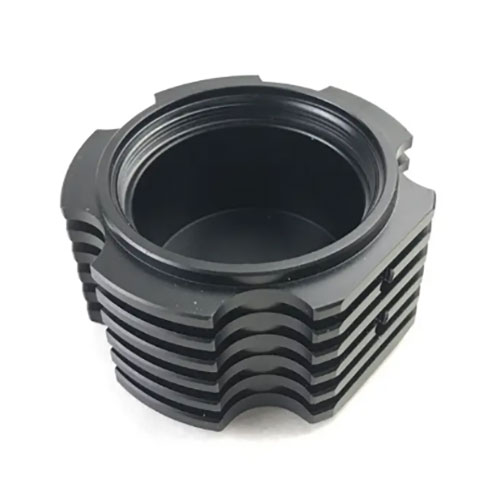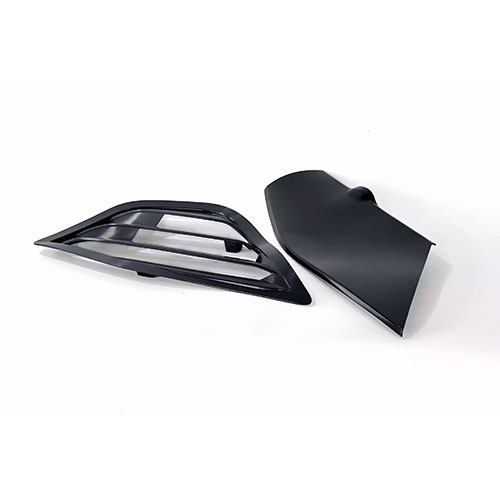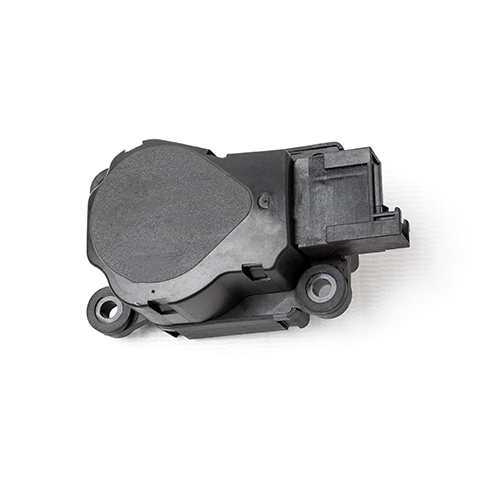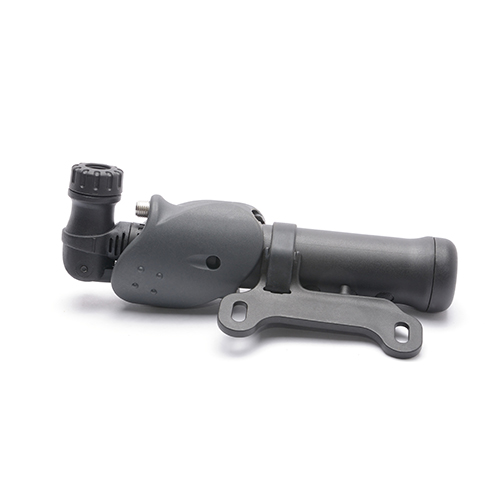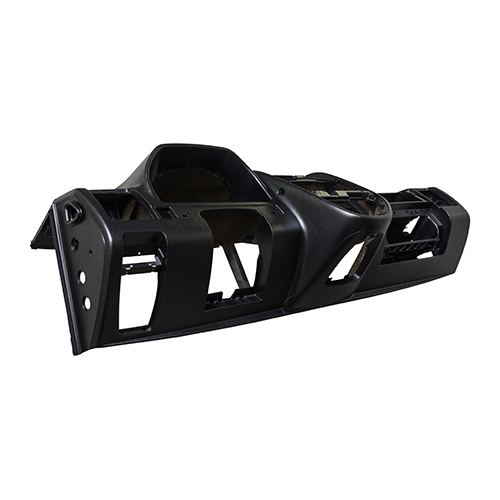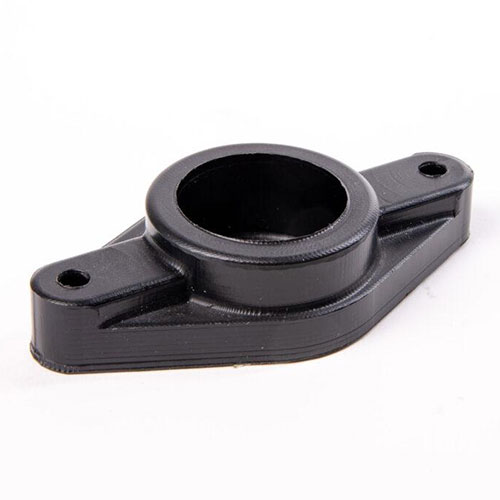Nylon 3D Printing Service
Custom Nylon 3D Printing Servicee
Providing Perfect Custom Nylon 3D Printing Solutions for Complex Geometries at Competitive Prices. NOBLE has extensive experience in custom nylon 3D printing, offering high-precision parts tailored to complex geometries. Get a quote in minutes and receive unparalleled, high-quality nylon 3D printinged parts in just days!
- Competitive Prices
- Quality Nylon Parts Made Faster and More Efficiently
- 35+ Surface Finishes, 80+ Metals & Plastics
- Parts Delivered in as Fast as 1 Day
- 100% Quality Inspection
- Shipped to 50+ Countries

Our Nylon 3D Printing Capabilities
NOBLE’s Nylon 3D printing capabilities include high-precision molding for custom-designed parts. We specialize in producing complex geometries with tight tolerances, offering superior surface finishes. With expertise in Nylon’s unique properties, we ensure high-performance, durable components tailored to meet diverse industry requirements.
| Price | $$$ |
| Lead Time | < 5 days |
| Wall Thickness | 0.045 in. – 0.140 in. (1.143mm – 3.556mm) |
| Tolerances | +/- 0.003 in. (0.08mm) with an included resin tolerance that can be greater than but no less than +/- 0.002 in./in. (0.002mm/mm) |
| Max Part Size | 18.9 in. x 29.6 in. x 8 in. (480mm x 751mm x 203mm) |
| Available Nylon at NOBLE | PA 6, PA66, PA11, PA12, Glass-Filled PA |

Characteristics of Nylon 3D Printing Materials
Thanks to nylon’s high strength, durability, chemical resistance, flexibility, and ease of molding, it is an ideal material choice for producing automotive, aerospace, and industrial parts.
| Features | Info |
| Subtypes | PA6, PA66, PA12… |
| Process | 3D printing, milling, turning, drilling, laser cutting |
| Tolerance | +/- 0.003 in. (0.08mm) with an included resin tolerance that can be greater than but no less than +/- 0.002 in./in. (0.002mm/mm) |
| Applications | automotive parts, gears, bearings, aerospace parts, electrical insulators |
| Finishing Options | Glossy, Semi-glossy, Matte, Textured… |
Pros and Cons of Nylon for 3D Printing
Nylon is a synthetic polymer widely used in 3D printing for manufacturing parts due to its excellent combination of mechanical properties, wear resistance, and versatility. It is commonly used in applications where strength, durability, and chemical resistance are critical.
High Strength and Toughness
Nylon exhibits high tensile strength, making it ideal for applications that require strong, load-bearing parts. It is also known for its toughness, meaning it can withstand impact and stress without cracking or breaking, which is particularly beneficial in engineering and automotive components.
Good Wear Resistance
Nylon’s excellent wear resistance makes it suitable for parts that experience friction and contact with other materials. After 3D printing, it is often used in gears, bushings, and bearings because it reduces the need for lubrication and maintains long-term performance.
Chemical Resistance
Nylon shows good resistance to oils, greases, and a wide range of chemicals. This makes it a preferred material for parts used in environments exposed to harsh chemicals or lubricants, such as in automotive, manufacturing, and industrial applications.
Low Coefficient of Friction
Nylon has a naturally low coefficient of friction, which reduces wear on both the material itself and the surfaces it contacts. This is especially valuable in high-performance applications like bearings and gears, where reduced friction improves efficiency and extends component lifespan.
Impact Resistance
Nylon is highly resistant to impact and can absorb shocks and stresses better than many other plastics. This makes it suitable for use in environments where parts may experience sudden impacts or loads.
Lightweight
Despite its strength, nylon is relatively lightweight compared to metals. This makes it advantageous in applications where weight is a concern, such as in aerospace, automotive, and sporting equipment.
Ease of 3D Printing
Nylon is easy to process using standard 3D printing tools, allowing for the production of complex and precise parts. The material also offers excellent dimensional stability during 3D printing, leading to high-quality, accurate finished products.

Moisture Absorption
One of the biggest drawbacks of nylon is its ability to absorb moisture from the environment. This can lead to dimensional changes, reduced strength, and altered mechanical properties. In applications requiring high dimensional stability, moisture absorption can be problematic, especially in humid conditions.
Low Heat Resistance
Nylon has relatively low heat resistance compared to other engineering plastics or metals. When exposed to temperatures above 150°C (300°F), its mechanical properties begin to degrade, limiting its use in high-temperature environments.
Susceptibility to UV Degradation
While nylon is chemically resistant, prolonged exposure to UV light can degrade its structure, causing it to become brittle and lose its strength. This makes it less suitable for outdoor applications unless UV stabilizers are added during 3D printing.
Limited Load-Bearing Capacity
While nylon is strong and tough, it still has limitations in terms of load-bearing capacity compared to metals like steel or aluminum. For heavy-duty structural applications, nylon may not provide the necessary strength or durability, especially when exposed to continuous or high-impact stresses.
Surface Finish Quality
Although nylon can be 3D printinged with ease, the surface finish quality may not always meet the aesthetic or functional requirements for certain applications. Parts often require additional finishing treatments, such as polishing or coating, to achieve the desired finish.
Cost Considerations
Nylon, especially high-grade types like reinforced nylon, can be more expensive than other common plastics such as polypropylene or polyethylene. This cost factor can limit its use in low-cost or mass-production applications.

Types of Nylon 3D Printing Materials
In 3D printing, Nylon is available in various grades and formulations, each designed to meet specific mechanical, thermal, and chemical requirements. These types are typically differentiated by their reinforcements, additives, or specific variations in molecular structure. Below are the common types of Nylon materials used in 3D printing:

PA6
PA6 is easy to 3D printing, offering a good balance between strength and flexibility. It’s commonly used in automotive, industrial, and consumer goods. However, its tendency to absorb moisture can affect dimensional stability during molding, so proper storage and drying are essential.
Tensile Modulus (MPa): 2500 – 3500 MPa
Tensile Strain (Yield): 7-10%
Rockwell Hardness (R-scale): R 80-95
Heat Deflection Temperature: 158 – 194°F

PA66
PA66 provides superior heat resistance and strength, making it ideal for high-performance parts. It’s more challenging to 3D printing than PA6 and requires slower 3D printing speeds and advanced cooling systems. Common applications include automotive, aerospace, and industrial components that demand high stiffness and dimensional stability.
Tensile Modulus (MPa): 3,000 – 4,000 MPa
Tensile Strain (Yield): 6-8%
Rockwell Hardness (R-scale): R 85-100
Heat Deflection Temperature: 212 – 248°F

PA11
PA11 offers excellent flexibility and impact resistance, making it suitable for parts subjected to stress. It is easy to 3D printing and maintains better dimensional stability than PA6. PA11 is widely used in automotive, medical devices, and industrial components such as hoses and flexible connectors.
Tensile Modulus (MPa): 2500-3000 MPa
Tensile Strain (Yield): 20-40%
Rockwell Hardness (R-scale): R 75-90
Heat Deflection Temperature: 185 – 203°F

PA12
PA12 combines flexibility with chemical resistance, offering excellent 3D printing capabilities and good dimensional stability. It is often used in automotive, electronics, and medical applications, including flexible tubing and cable insulation. Its low moisture absorption helps maintain consistent performance.
Tensile Modulus (MPa): 2200-2800 MPa
Tensile Strain (Yield): 15-30%
Rockwell Hardness (R-scale): R 70 – 90
Heat Deflection Temperature: 176 – 212°F

Glass-Filled PA
Glass-filled PA offers enhanced stiffness, strength, and heat resistance, making it ideal for structural and load-bearing components. It is more challenging to 3D printing due to the abrasive fibers, which require carbide tools. This material is commonly used in automotive, aerospace, and industrial applications where high rigidity is required.
Tensile Modulus (MPa): 4,000 – 7,000 MPa
Tensile Strain (Yield): 3-5%
Rockwell Hardness (R-scale): R 95 – 110
Heat Deflection Temperature: 248 – 320°F
Surface Finishing Options for Nylon 3D Printing
Given Nylon’s natural surface roughness and its tendency to absorb moisture, selecting the appropriate surface finishing method is essential for improving durability, reducing friction, and enhancing overall performance. Proper surface treatments can help mitigate moisture absorption, improve aesthetics, and increase the lifespan of the molded parts.

Sand Blasting
Band blasting cleans the surface of any impurities and peels coating through the propelling of blast media streams over the parts.

Polishing
Working on metal and hard plastics, our polishing uses highly efficient machinery to get our parts between Ra 0.8~Ra0.1 for a cleaner surface.

Painting
Painting involves Spray droplets can be dispersed uniformly or in fine amounts to cover a wide surface area and bring out greater color to the part.

Laser Carving
Helpful in brand recognition or parts organization, we use laser carving that applies various printing methods during full-scale production to quickly embed barcodes, lettering and logos on the parts.

Powder coating
We apply a thin layer of protective polymer with the corona discharge phenomenon to give our part a lasting finish that protects from impacts and prevents wearing down.
Custom Nylon 3D Printing Parts Display
Explore our over a decade of experience in custom Nylon 3D printing, featuring precision prototypes and parts produced for our valued customers.
Applications of Nylon 3D Printing
PA Nylon’s versatility in 3D printing spans a broad range of industries, from automotive to aerospace, industrial machinery, and medical devices. Its excellent machinability, combined with superior wear, chemical, and impact resistance, makes it an ideal choice for high-performance, precision-engineered parts in demanding applications.

Automotive Parts
In the automotive industry, Nylon is widely used for parts like gears, bushings, and bearings. Its excellent wear resistance and impact strength are crucial for components exposed to high friction and heat. 3D printing allows for precise, repeatable production of complex geometries with tight tolerances, ensuring durability in demanding automotive environments.

Industrial Machinery Parts
Nylon is ideal for parts such as conveyor belts, rollers, and wear plates due to its toughness and low friction. 3D printing enables high-precision fabrication of intricate, custom components that can withstand mechanical stress, reduce wear, and ensure smooth operation in heavy machinery.

Medical Devices
Nylon 3D printing is commonly used to produce medical devices, surgical instruments, and diagnostic equipment components, such as handles, valves, housings, and brackets. The 3D printing process can achieve the precision required to meet the tight tolerances needed for medical devices, ensuring functional performance, sterility, and durability in clinical environments.

Aerospace Parts
In aerospace applications, Nylon is used for components like brackets, fasteners, and internal parts. The material’s heat resistance and low weight are critical in aerospace, where every gram counts, and reliability is essential. 3D printing enables the fabrication of lightweight, high-strength parts with exceptional dimensional accuracy.

Electrical Insulation
Nylon 3D printinged parts are used for electrical housings, connectors, and insulators due to their excellent electrical properties and dimensional stability. The 3D printing process allows for tight tolerances in components requiring precise fits, while its moisture resistance ensures reliable performance in electronic systems.

Robotic Parts
Nylon 3D printing is ideal for producing parts such as custom gears, joints, bushings, and structural components for robotic systems. Nylon’s resistance to wear and abrasion makes it ideal for high-performance applications that require smooth, efficient motion. The material’s flexibility and toughness help protect precision parts, ensuring reliability in harsh operating conditions.
If you are looking for a rapid prototyping manufacturer or a CNC machine shop to fabricate small, medium-volume, or mass-production products, NOBLE is an ideal choice.Our well-trained and experienced staff manufactures parts in line with drawings on modern CNC machines, with the highest accuracy and processing quality in all sizes.In addition, we provide professional design considerations for your CNC machining projects.
Want to get the most professional and fastest service for your CNC machining project? Upload your CAD files now and obtain a quote!

